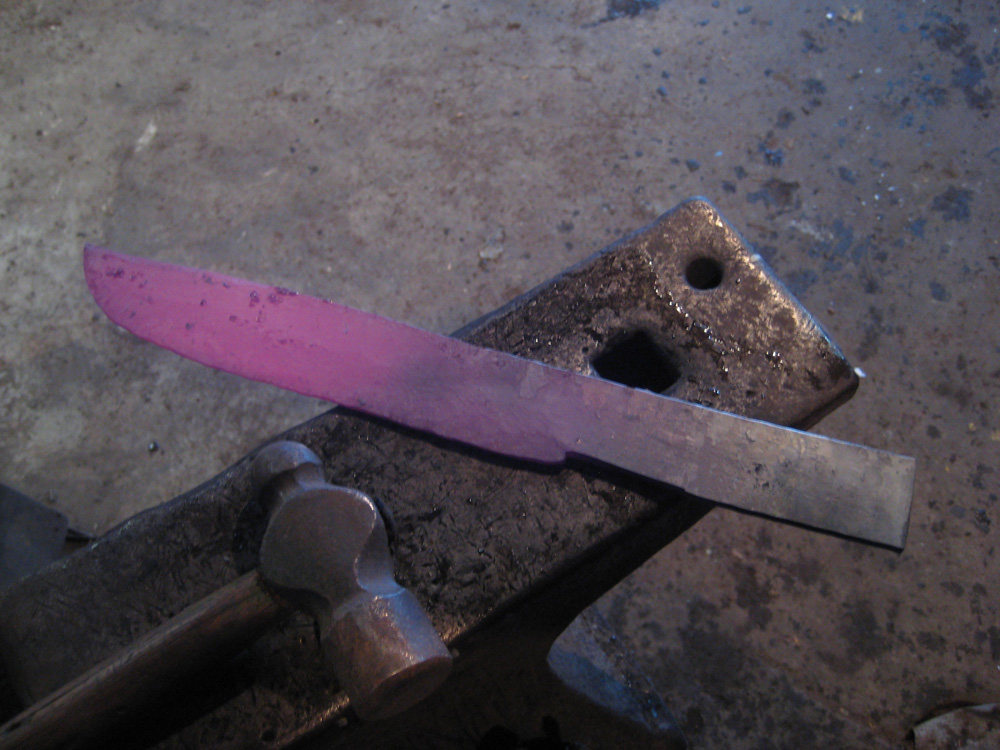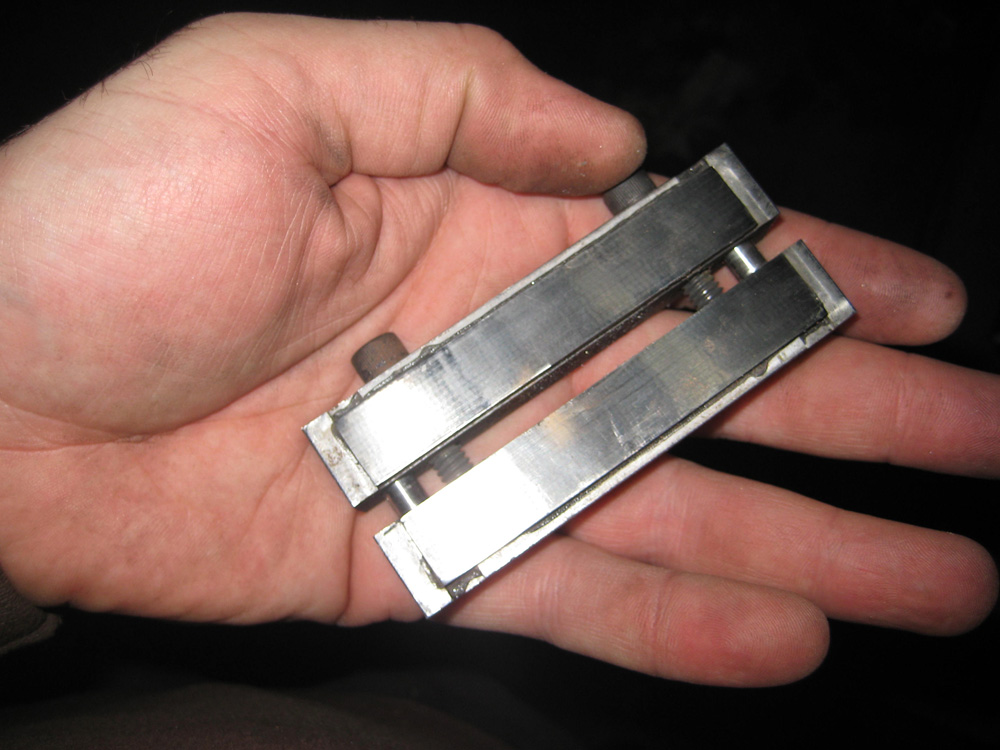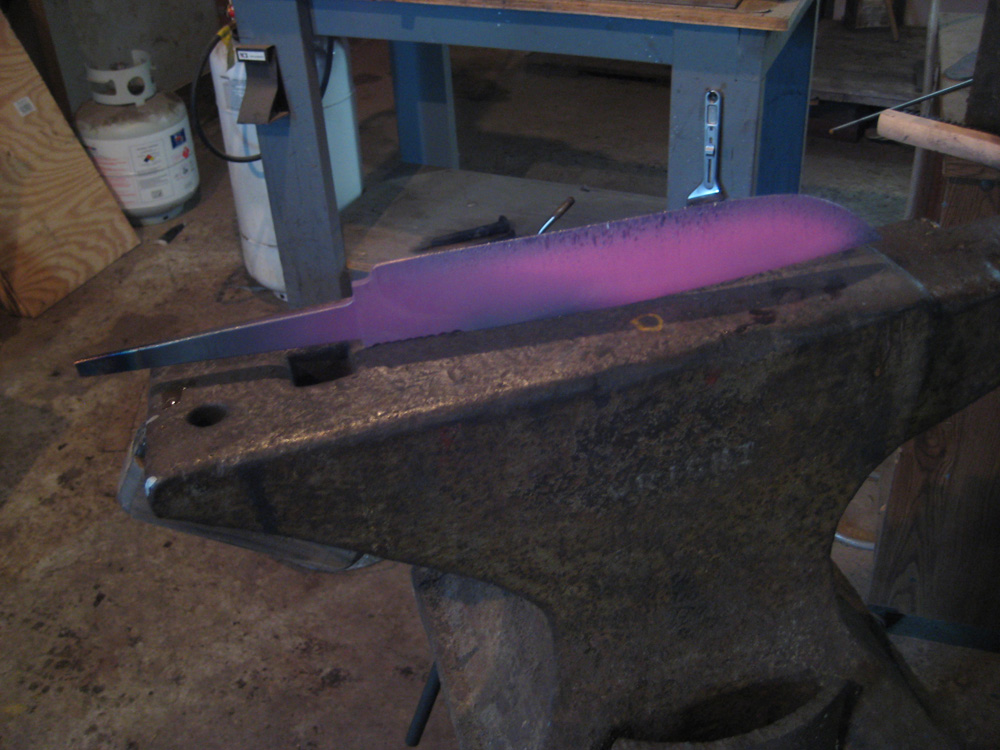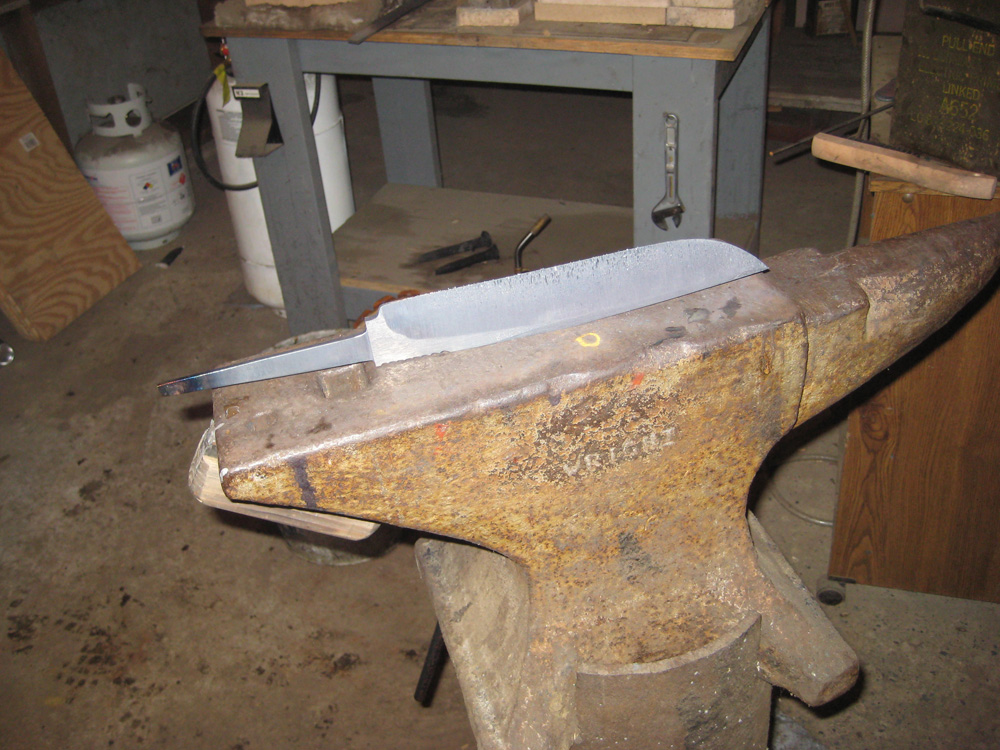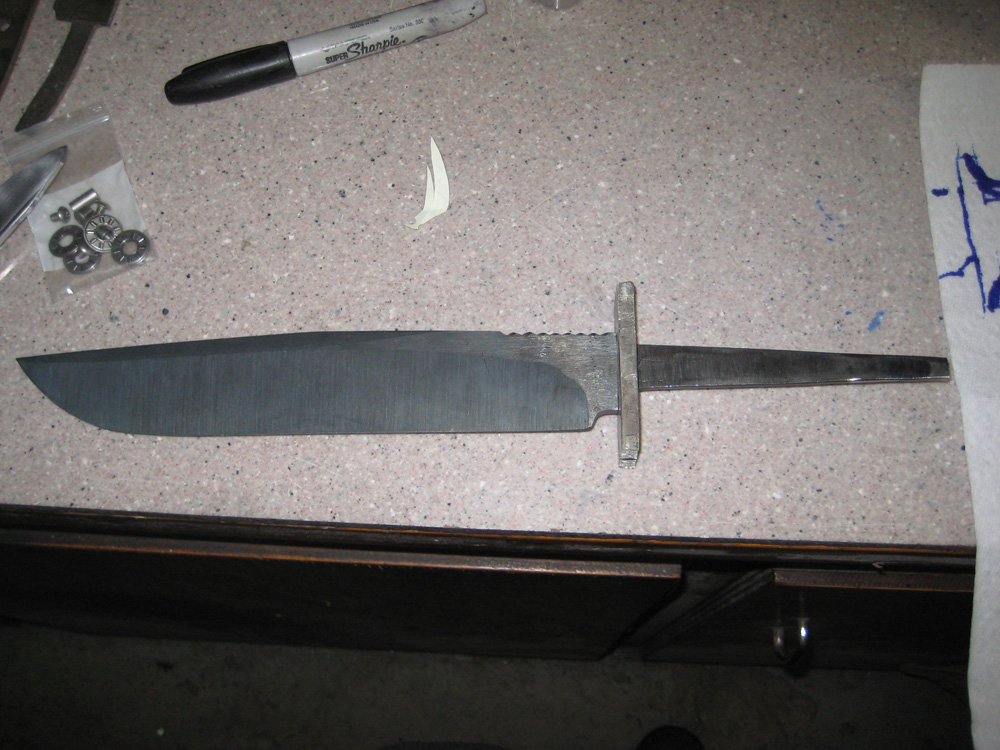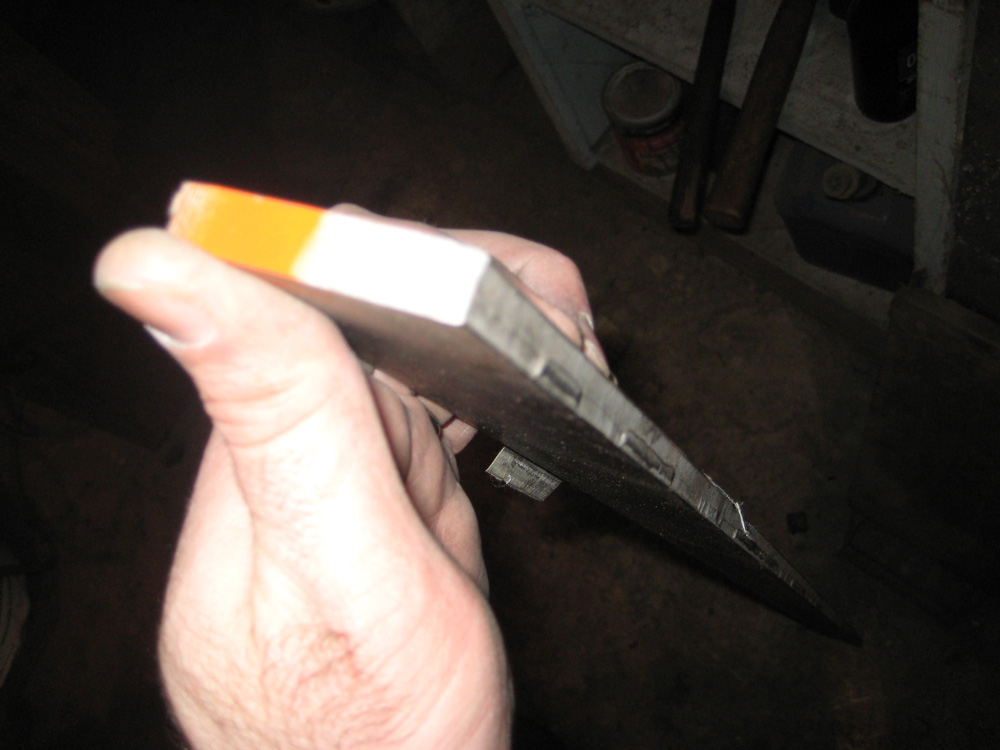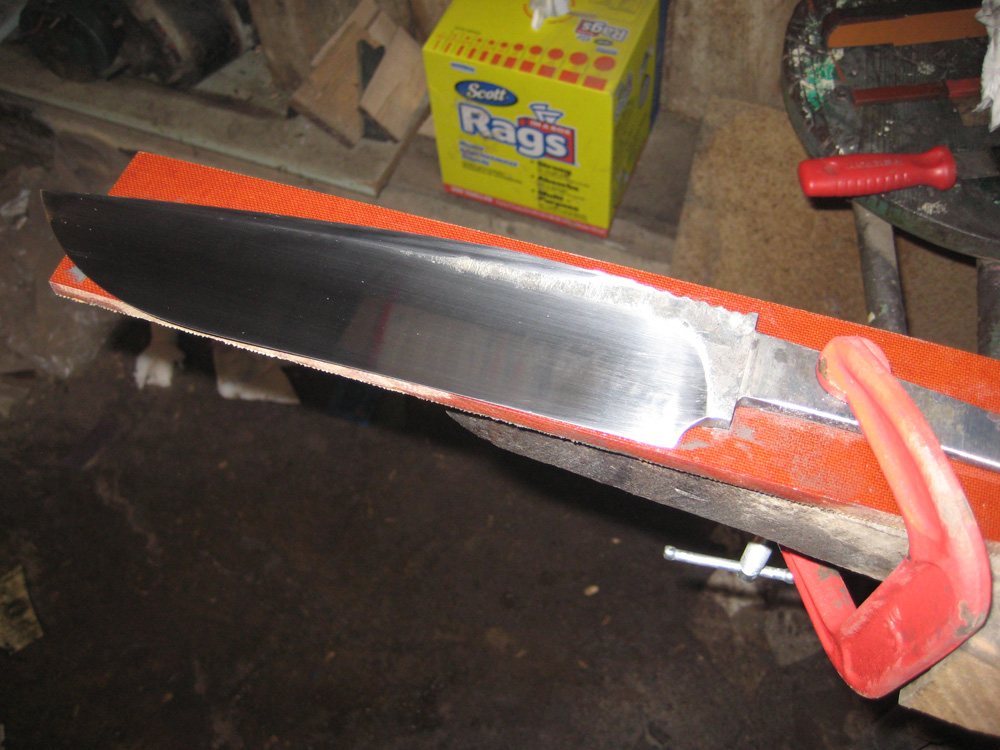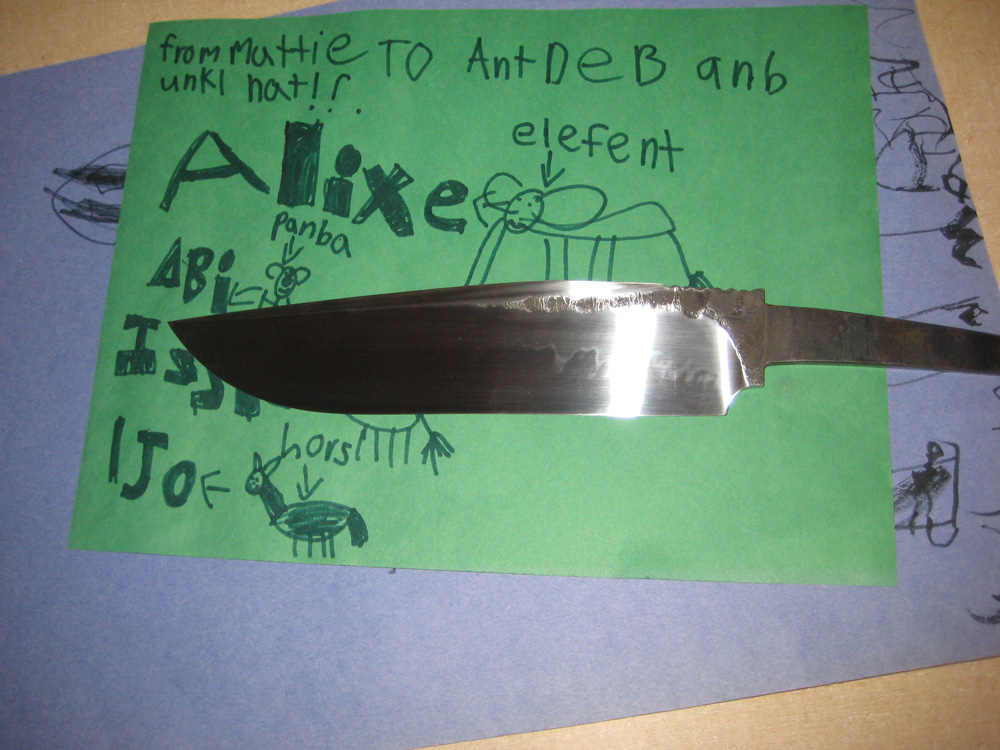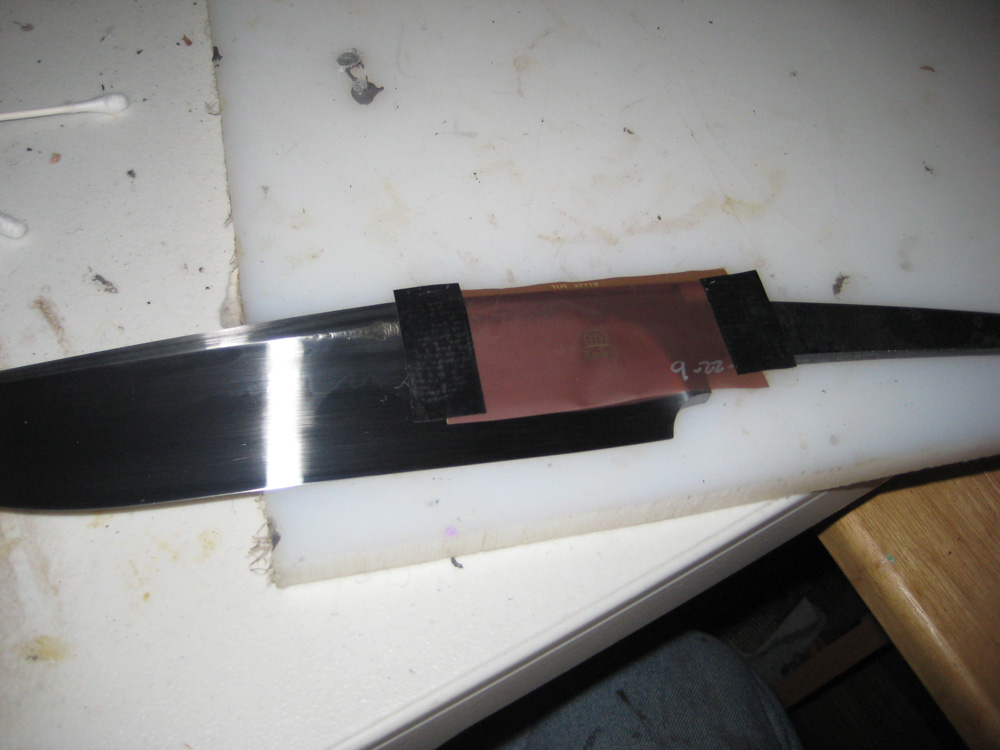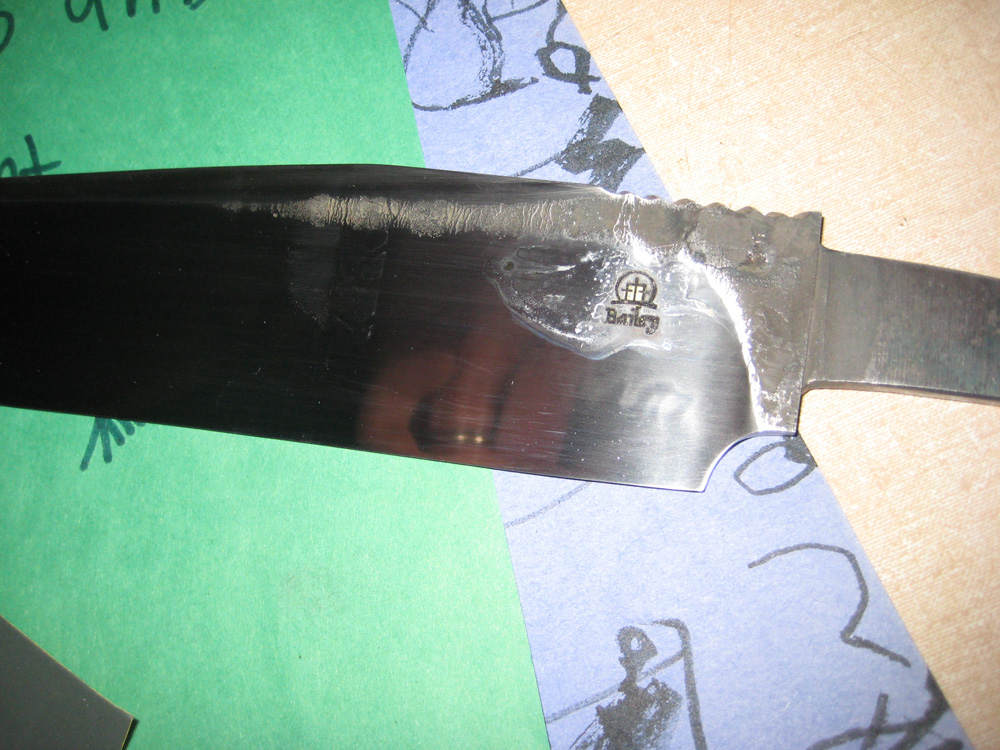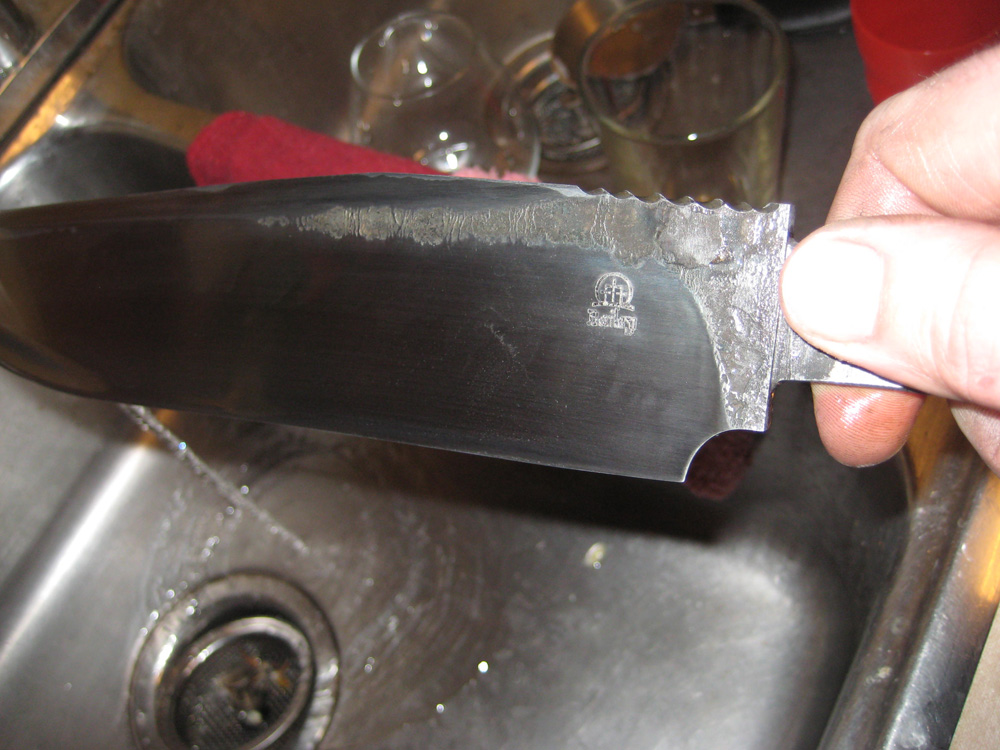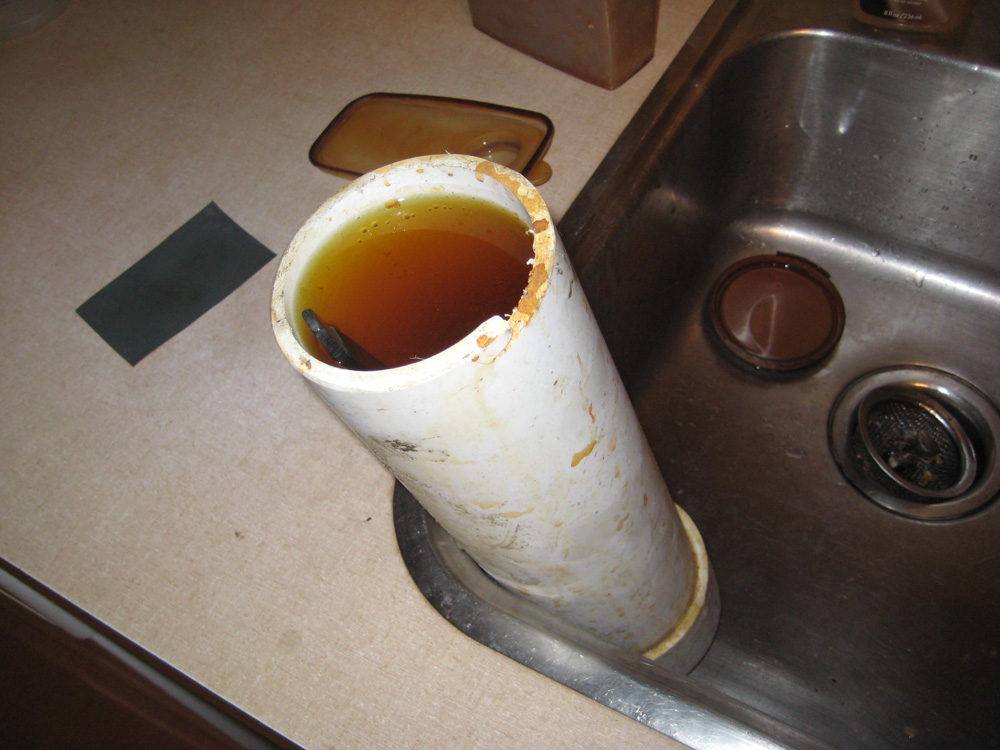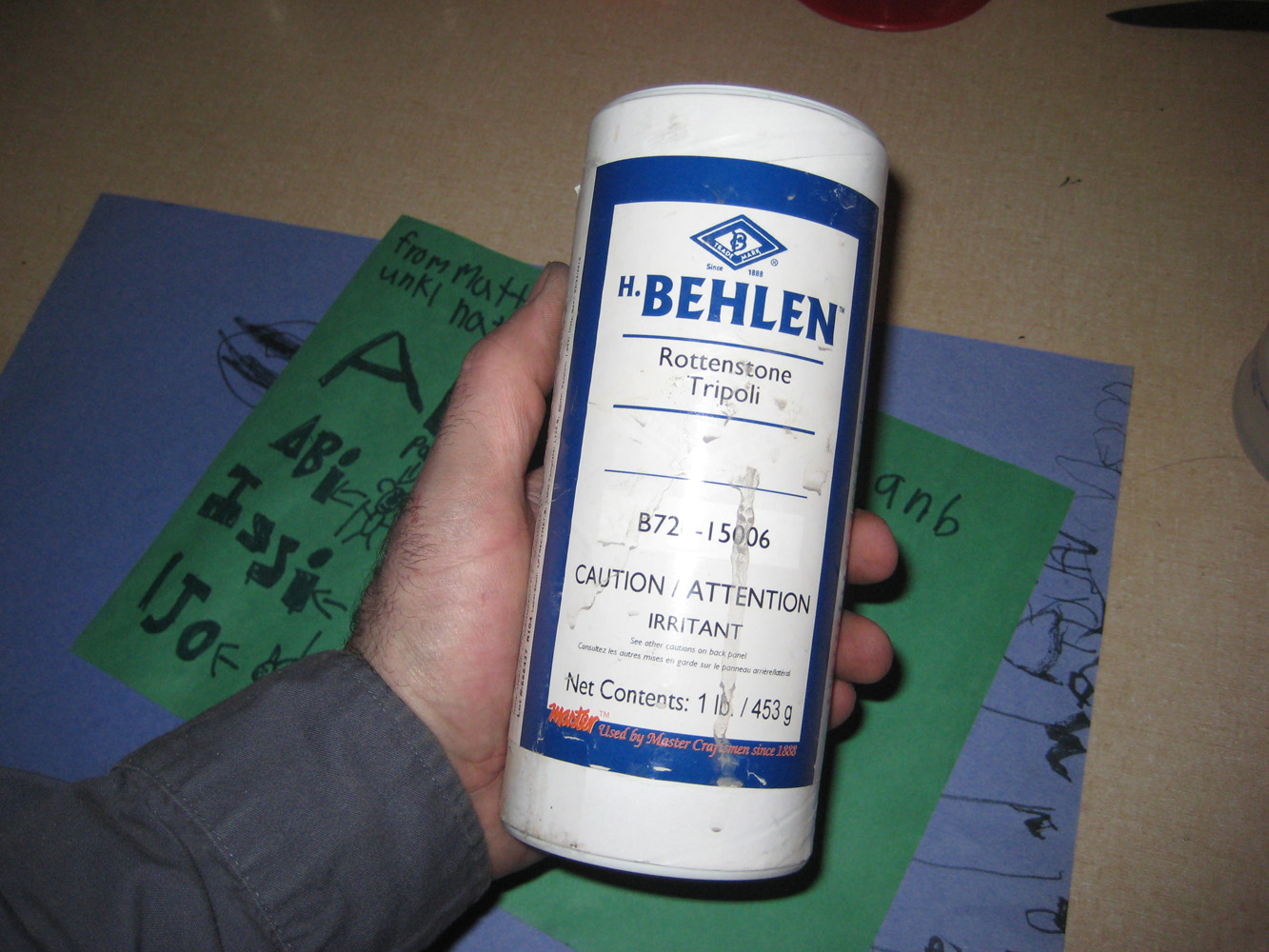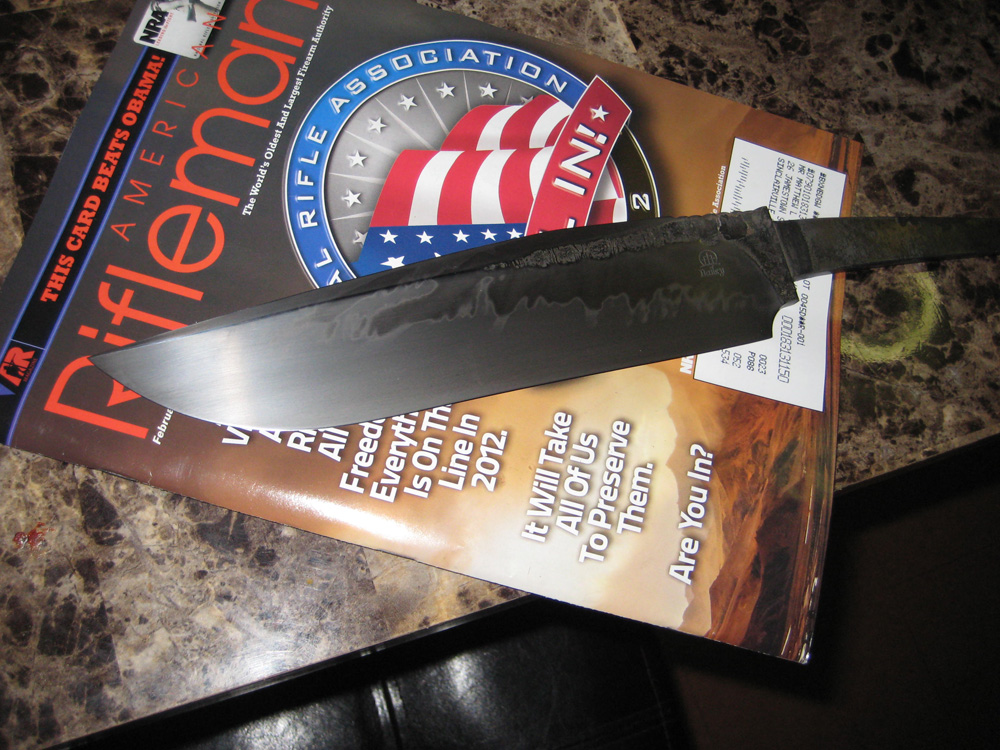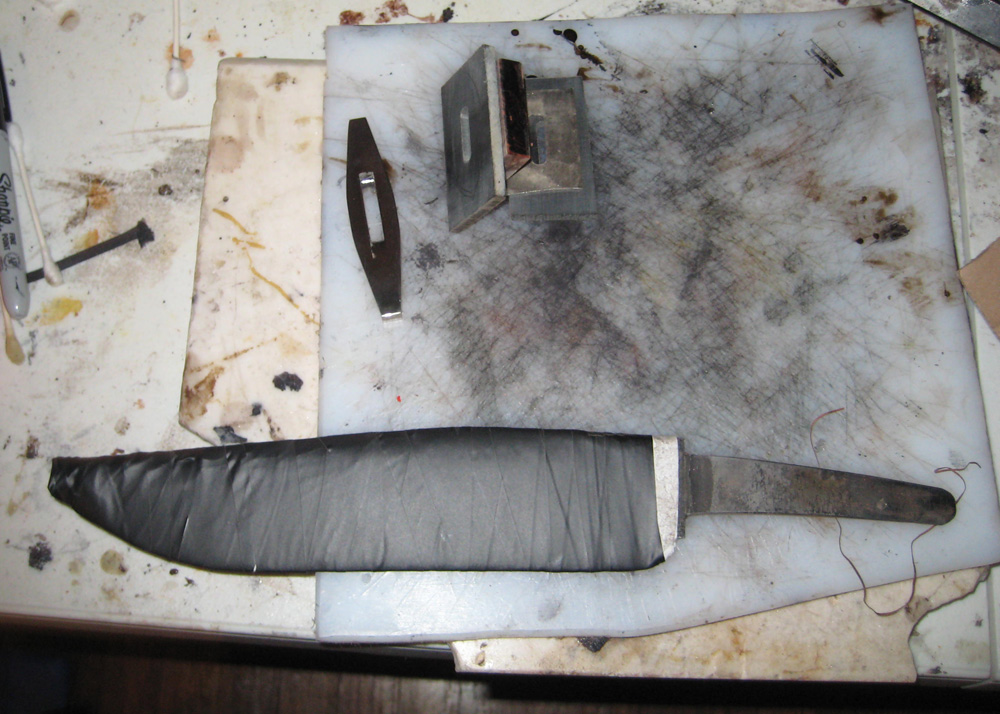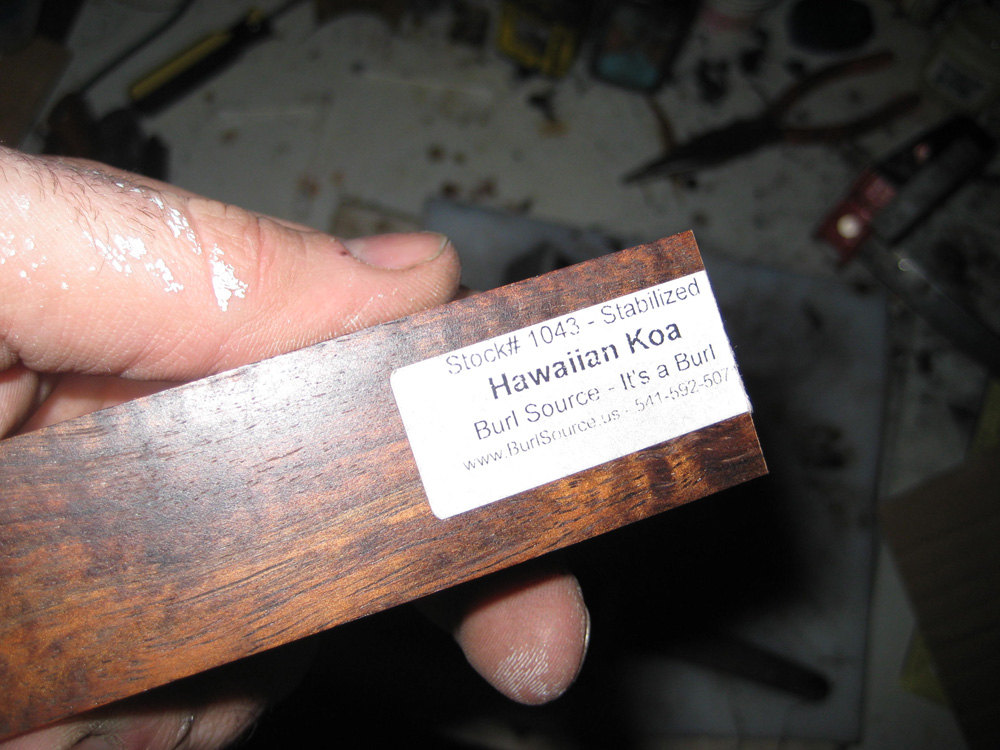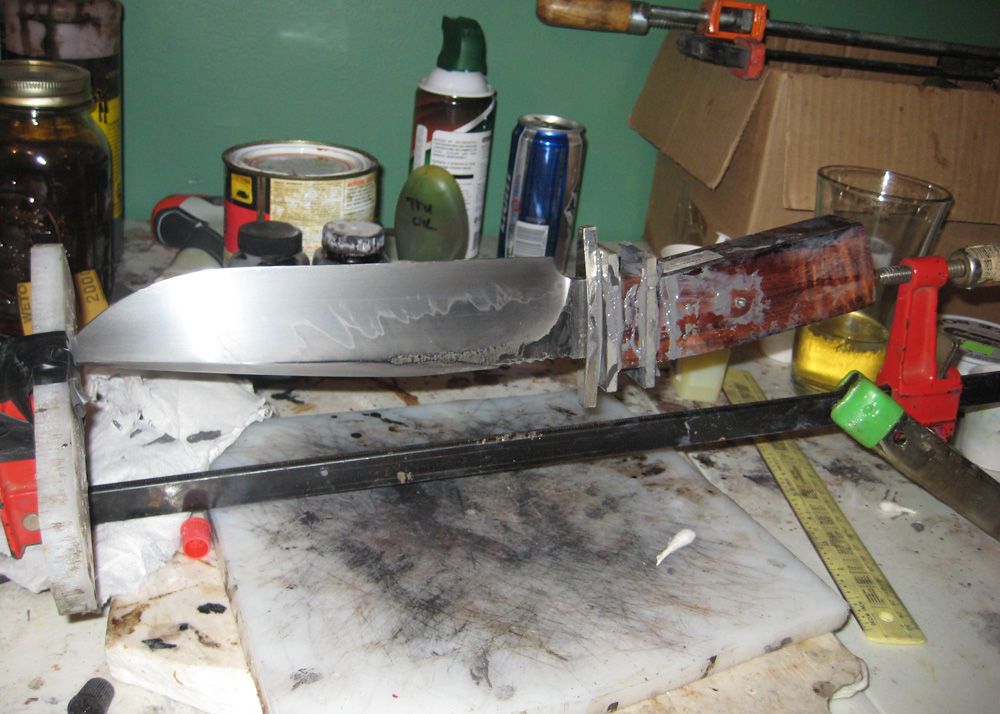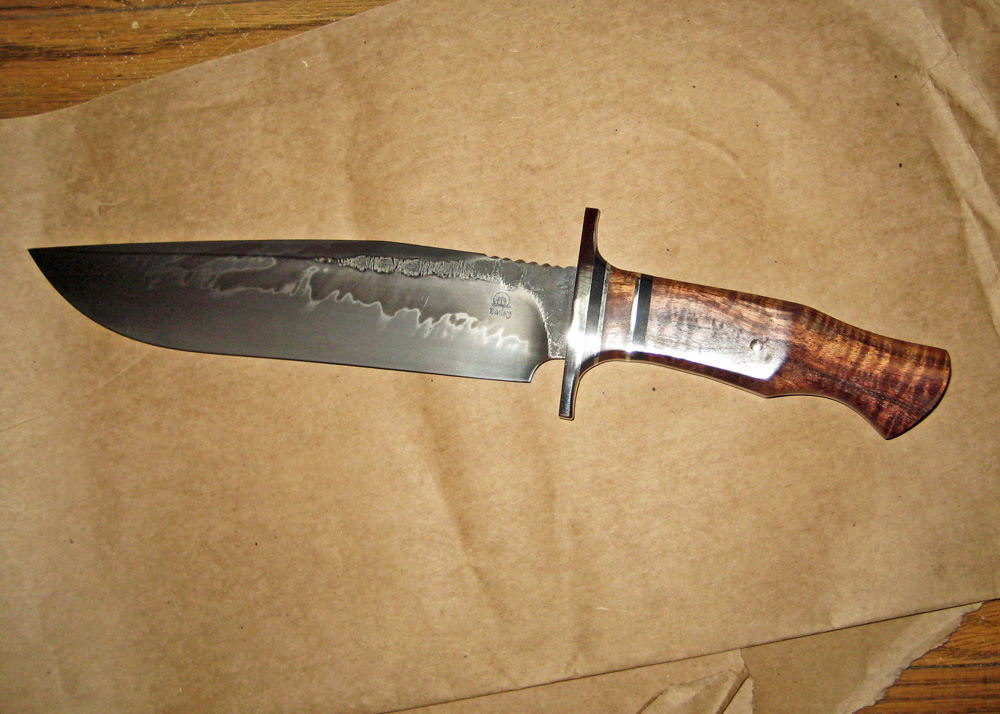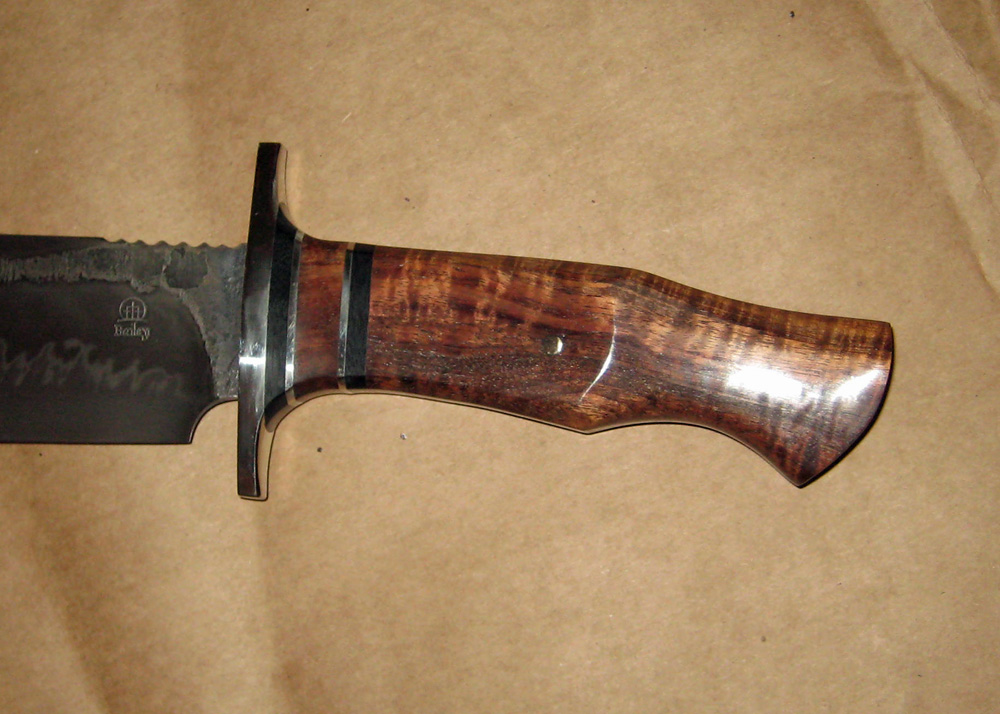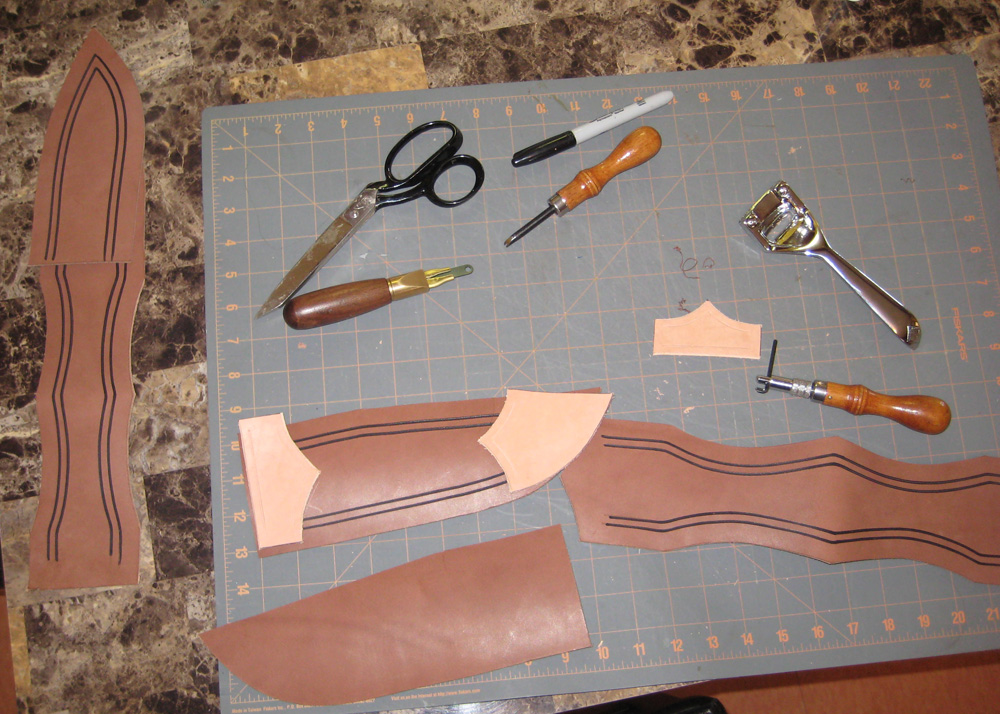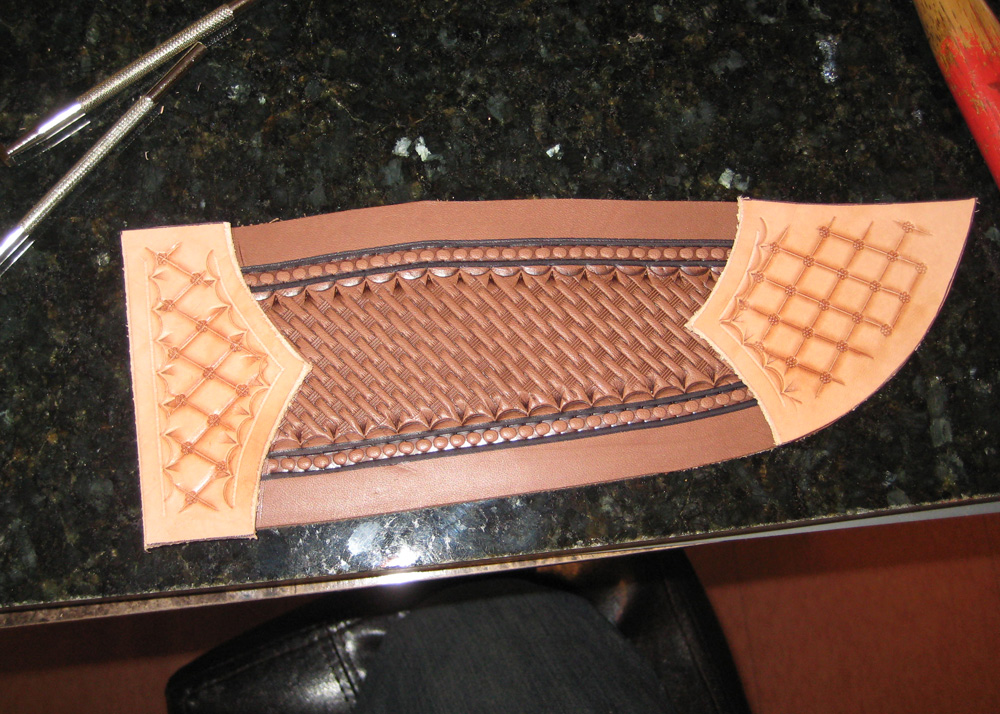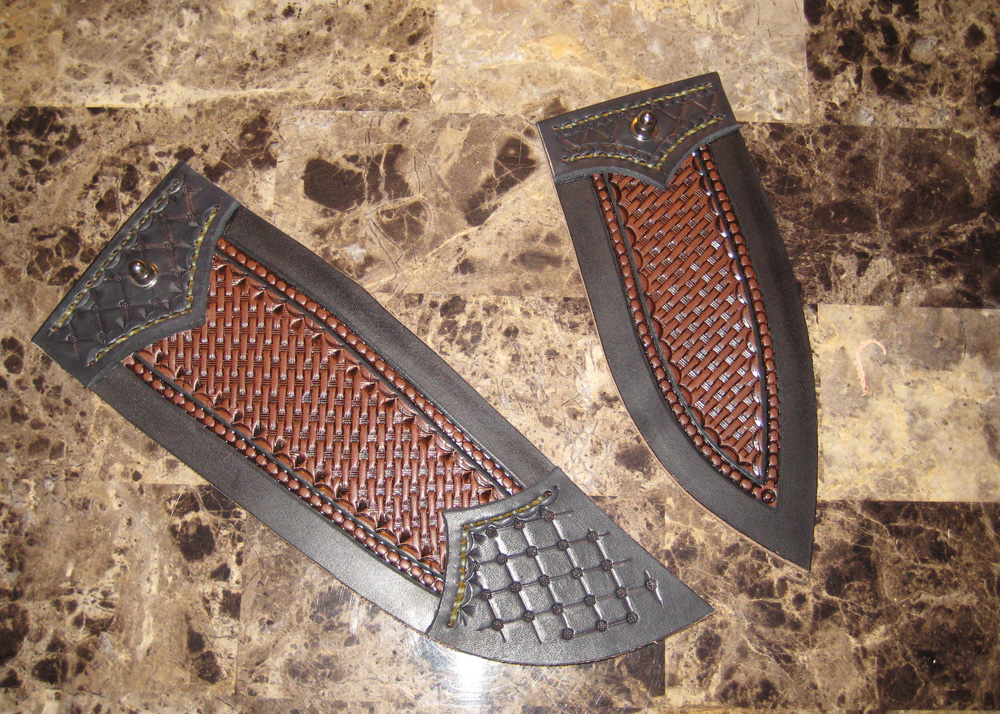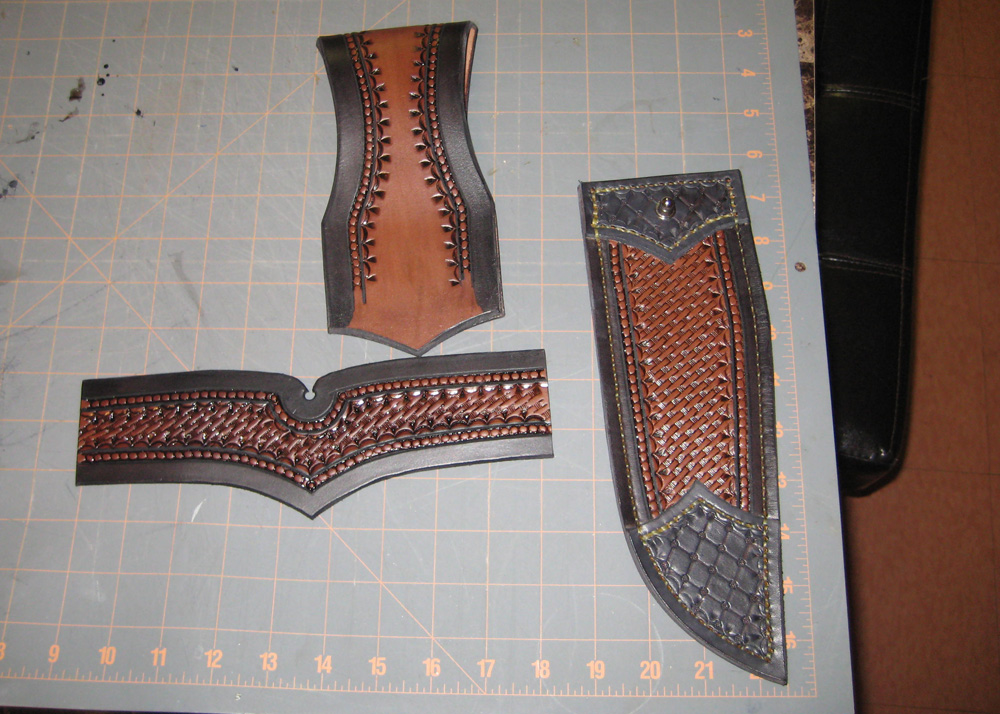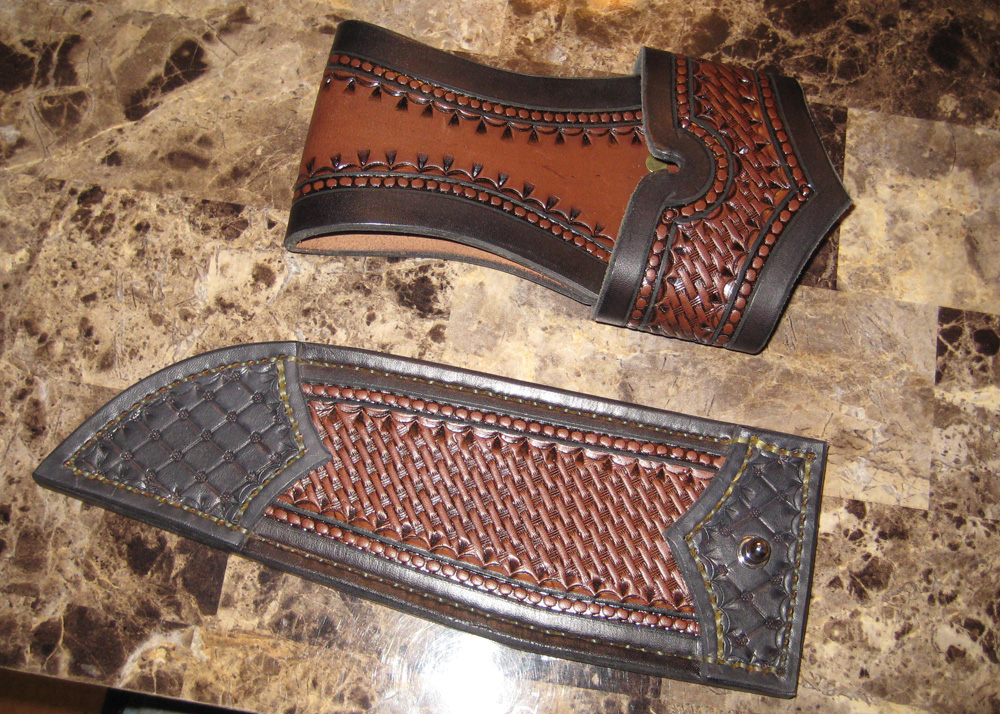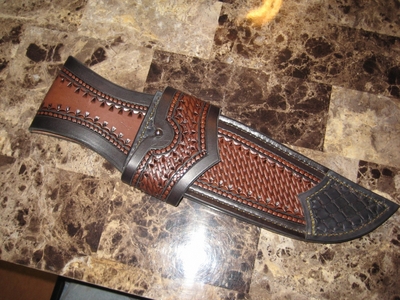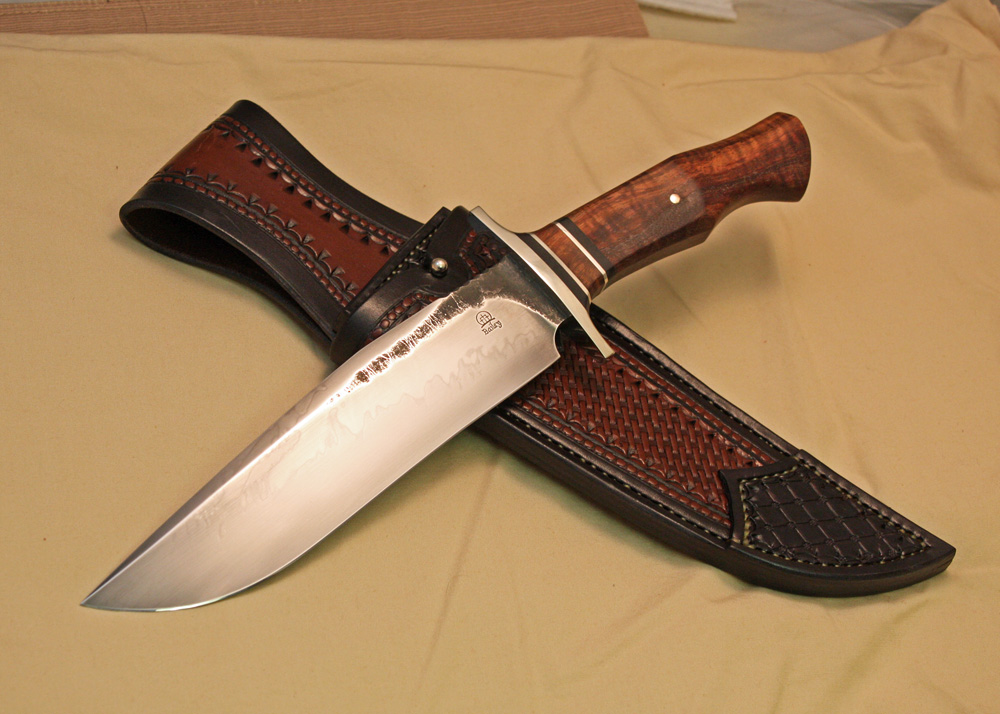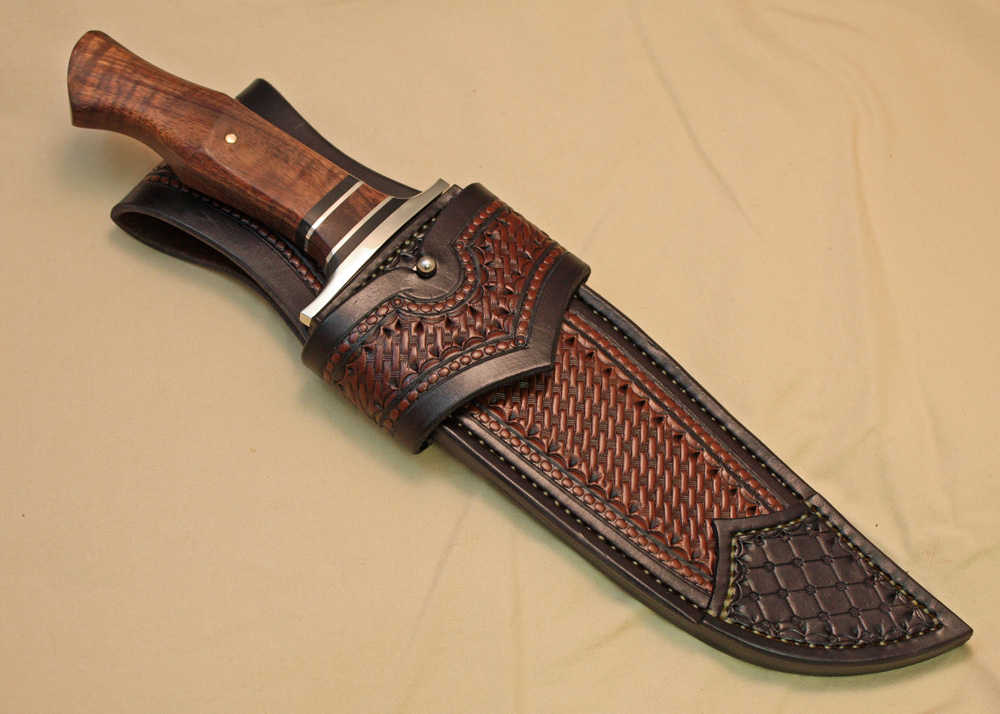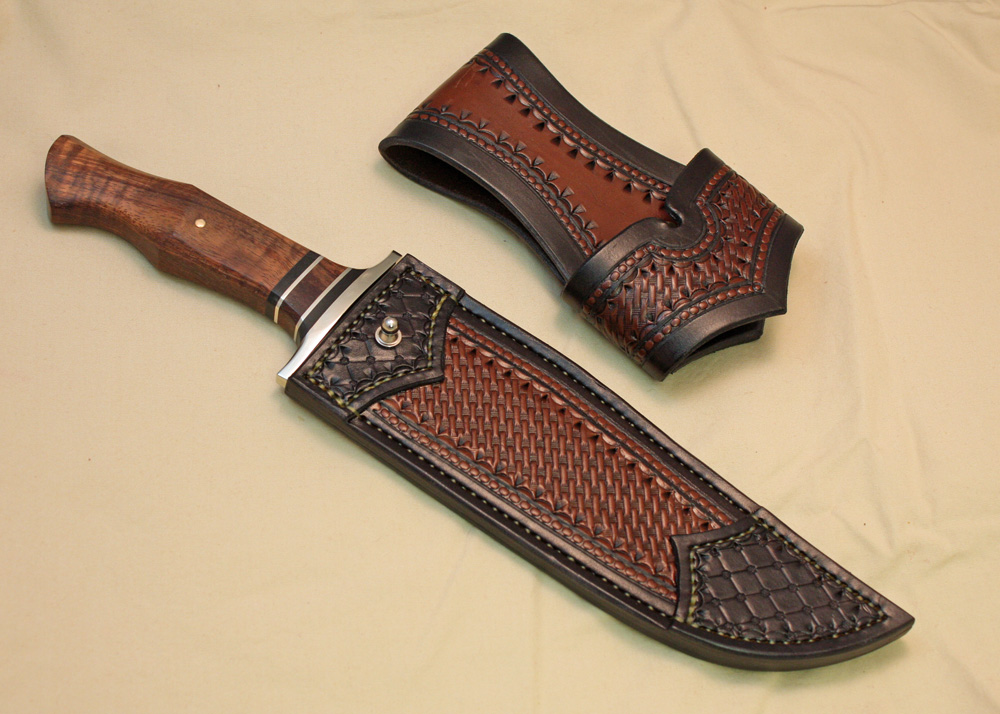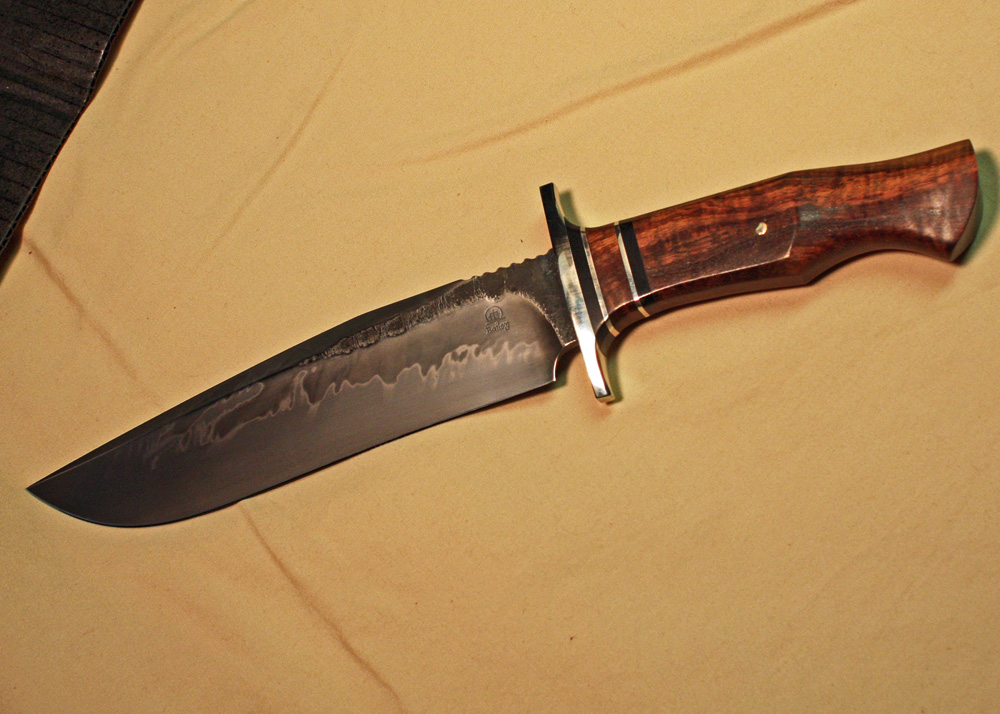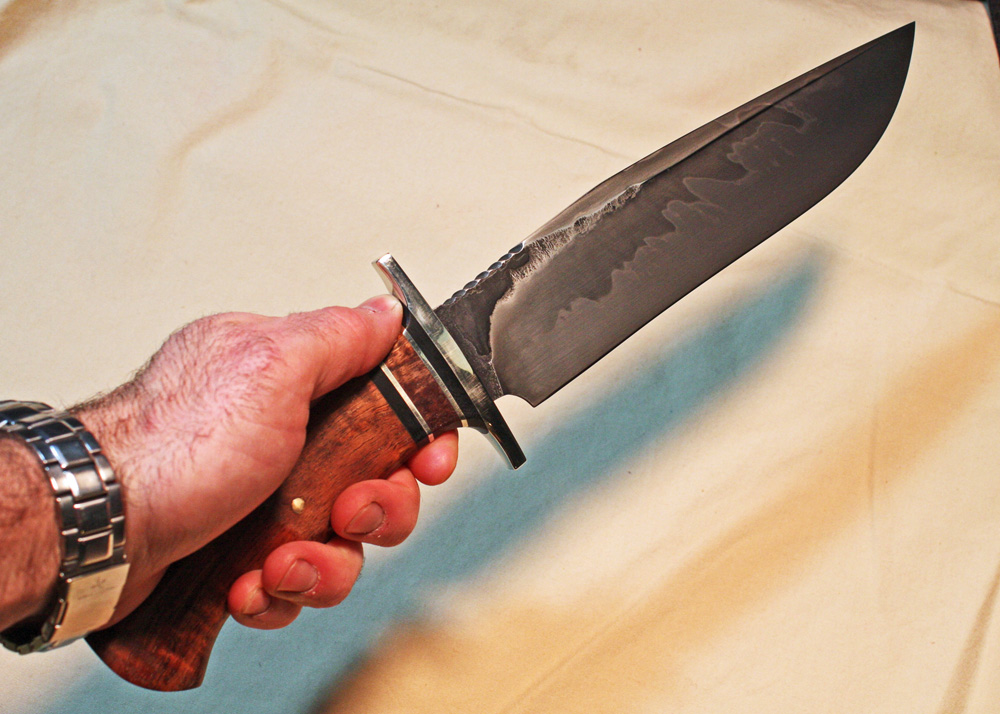Ok, so my sister-in-law's father asked me to make him a big bowie. He said he wanted one to just hang on his wall, but I convinced him that a wall hanger is fine, but if it happened to be able to lop off a limb or two, that would be ok also. I started with some of Don Hanson's W2 that comes in 2 1/2" cylinders. I have a local machine shop cut them into cookies since it would take my bandsaw forever. I usually go with 3/4" cookies, then weld them to a rebar and use the press to draw them out. I was not sure if I would be able to get the length and width I needed on the blade, but I thought I would take a shot at it anyhow. Here is the cookie, and me drawing it out on the press. I love that press.
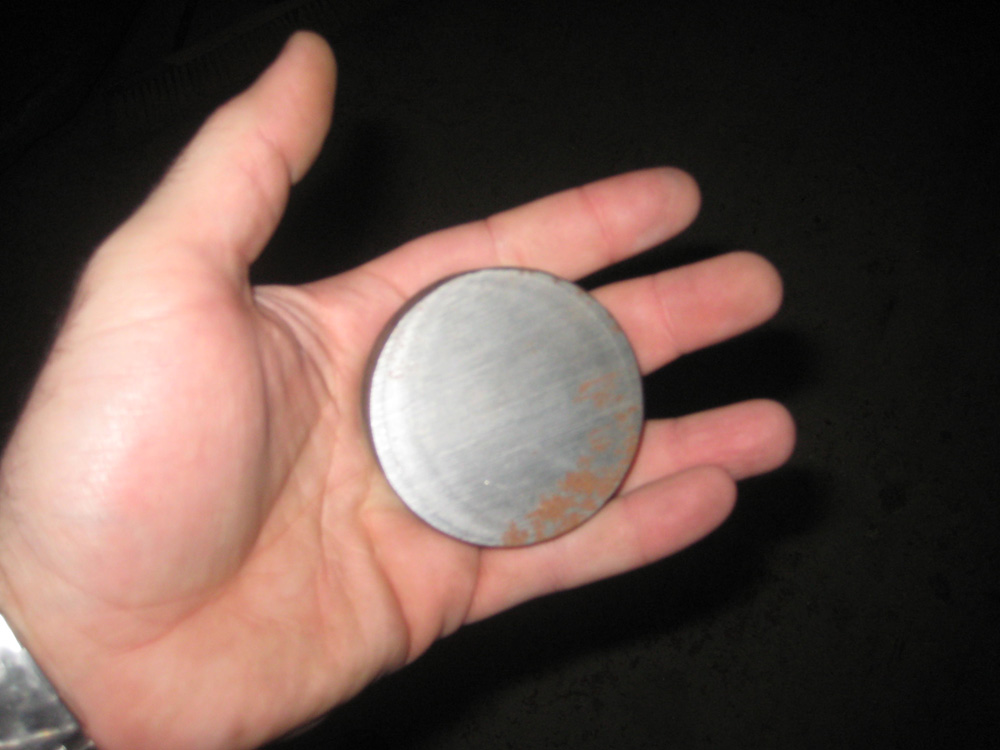
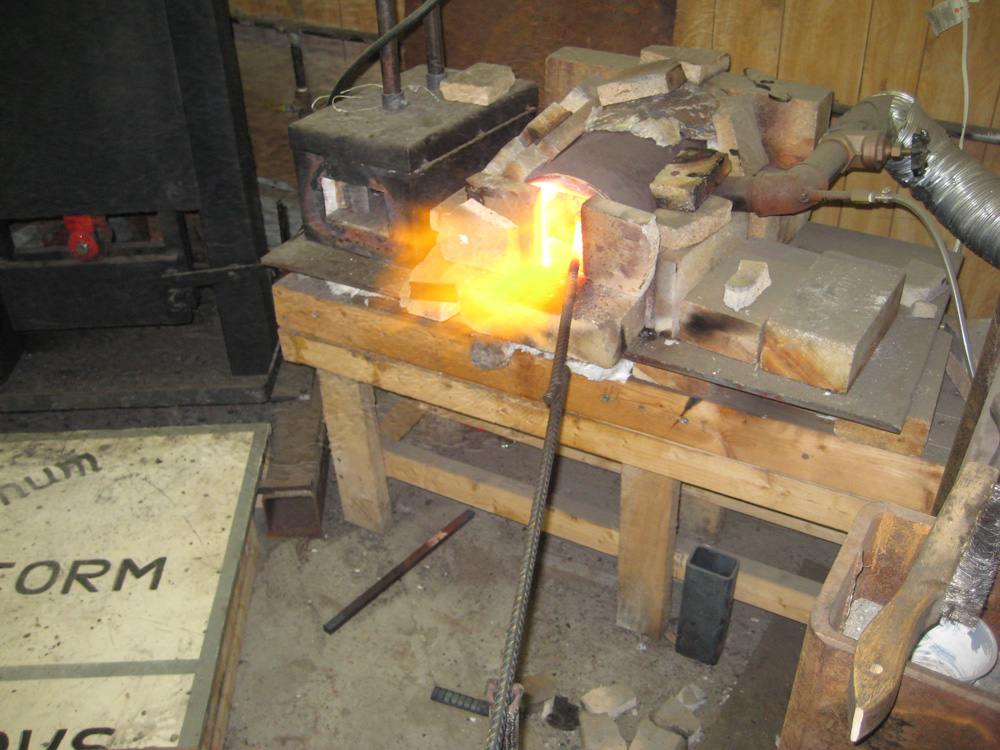
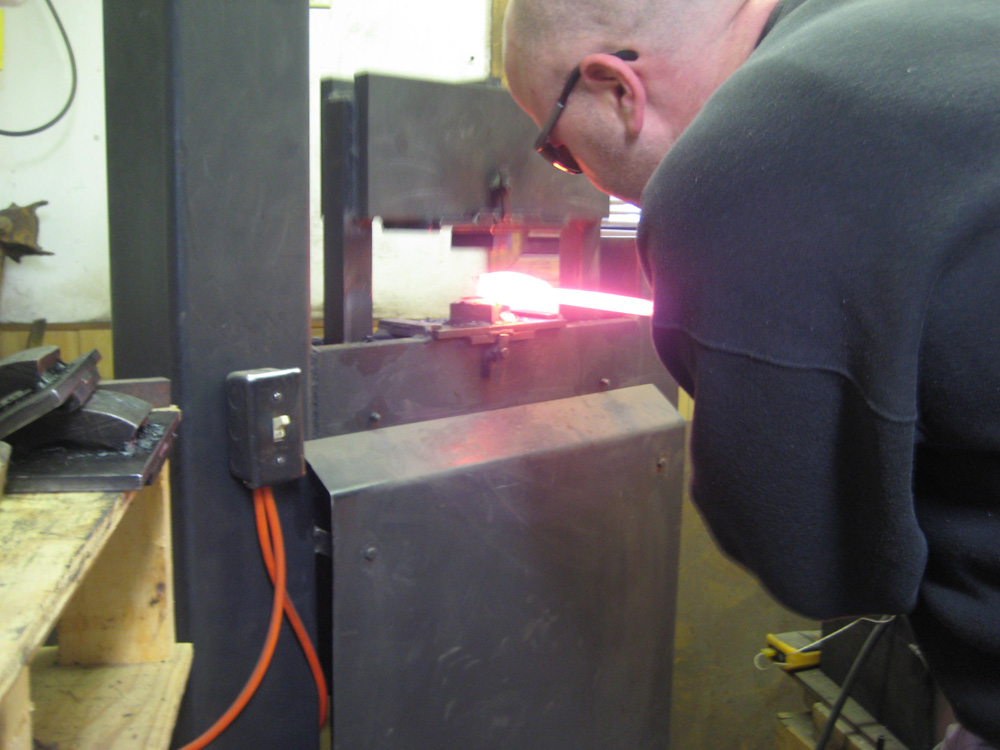
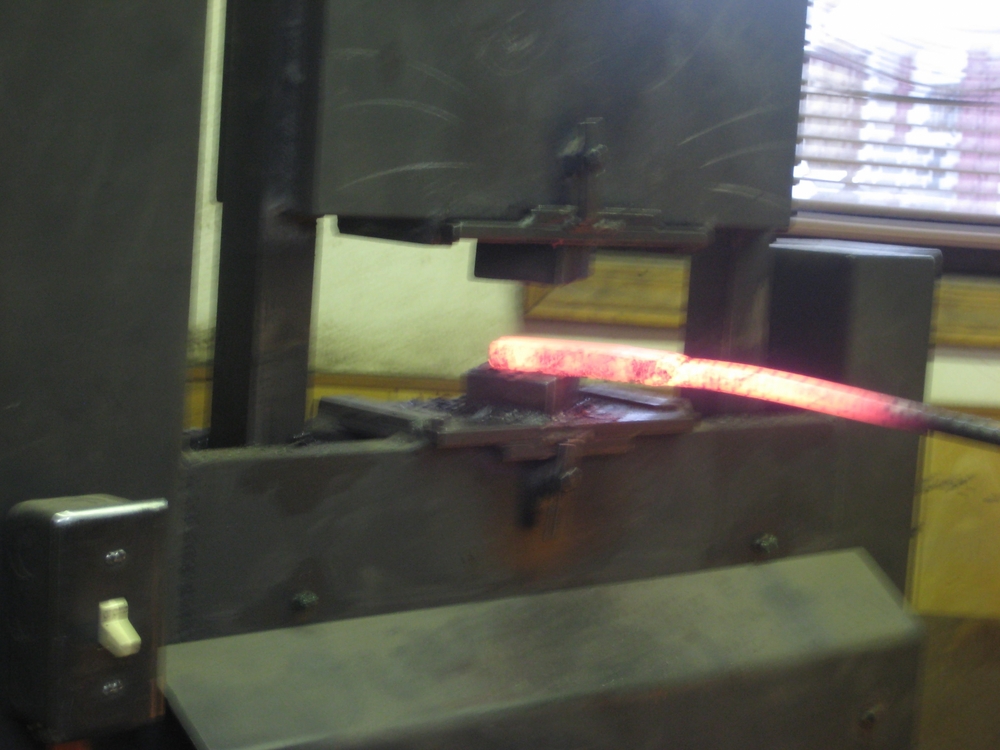
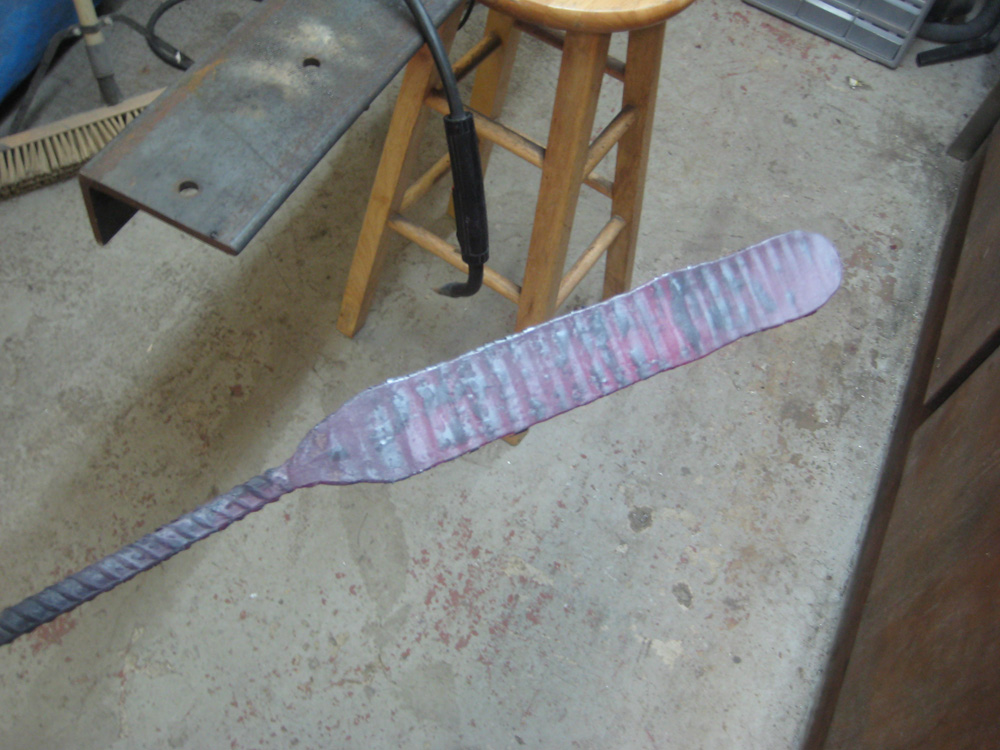
As luck would have it, I forged it out too thin, and it still was not the right dimensions for the knife. I knew it may not have worked, so I just turned this into two smaller hidden tang knives. I had some W2 on order from Aldo Bruno, an it comes in bar stock. It came in a couple days ago, and I am ready to forge it out to the dimensions I need.
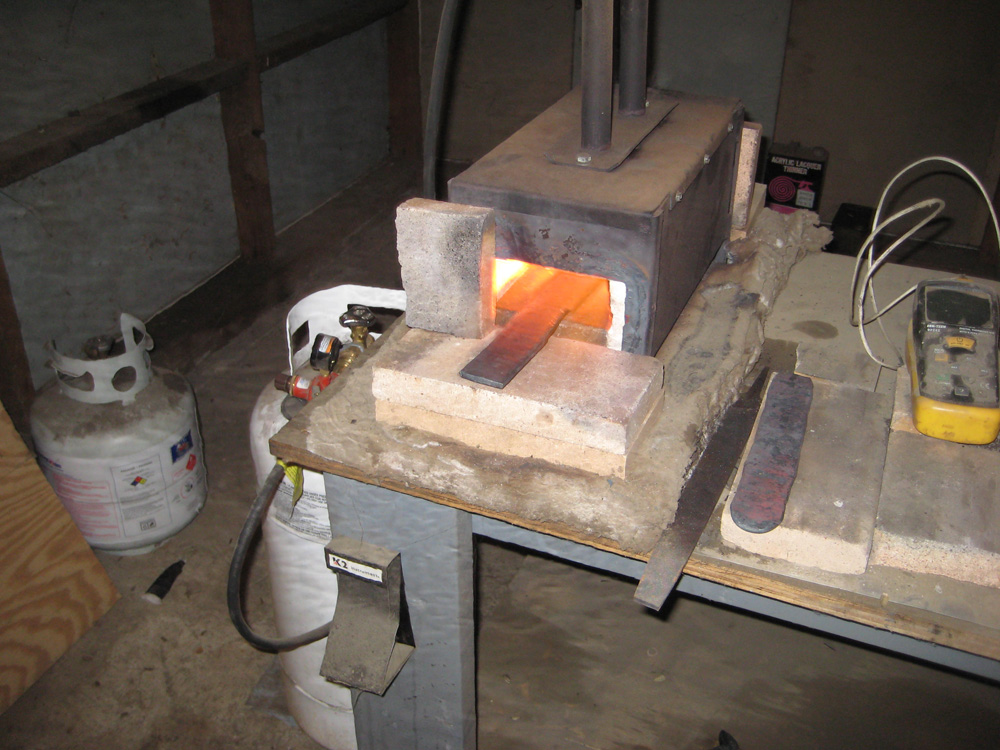
Here is just a random
shot of my hammer and anvil. It is not the actual hammer I
used to do most of the forging, they are on the shelf behind the
anvil, but I use it to clean up all the bevels and make sure I have
no deep hammer marks. It is hard to get shots of me forging
without the help of a second party. It happened to be cold
and snowing today, so my wife thought it would be better for her to
stay inside.
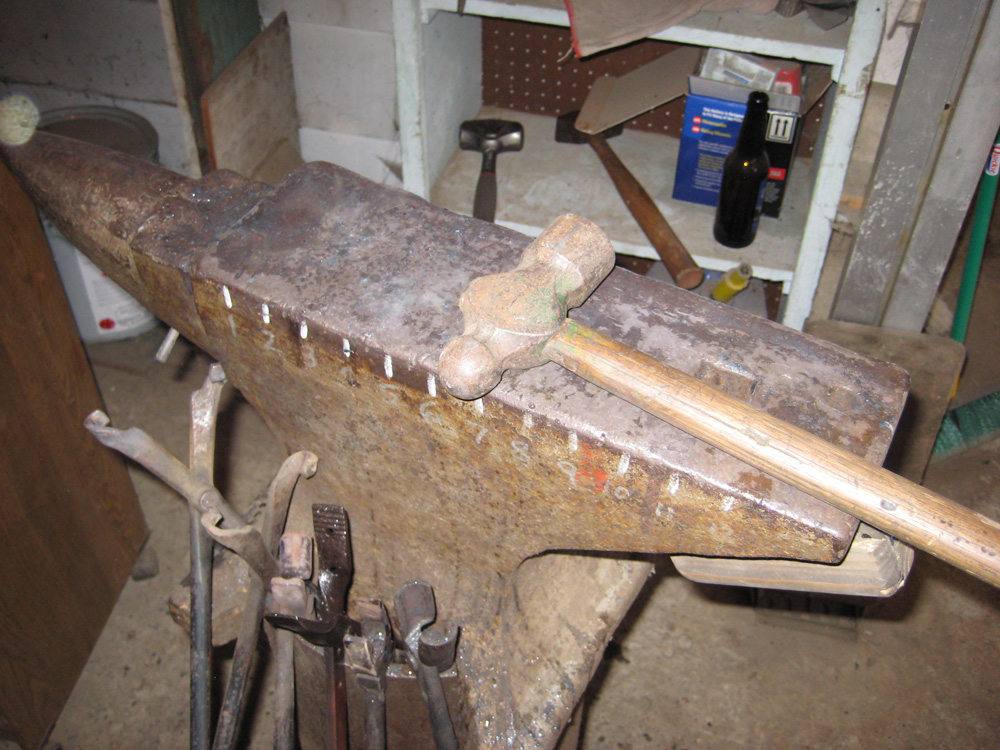
Here the bevels are forged in, and it is basically to shape. The little divot towards the back of the blade is a grinder mark I use to show me where the back of the blade should be when it is hot. It is probably not the best method, but it works for me. I also cut the tip in instead of forging it. Purists will think that is cheating, and it probably is, however I hate forging tips, I always get the fish lip thing. To keep that from happening I waste a little steel and cut the tip in. Once it is in, I still forge it a little to get it the shape I want it.
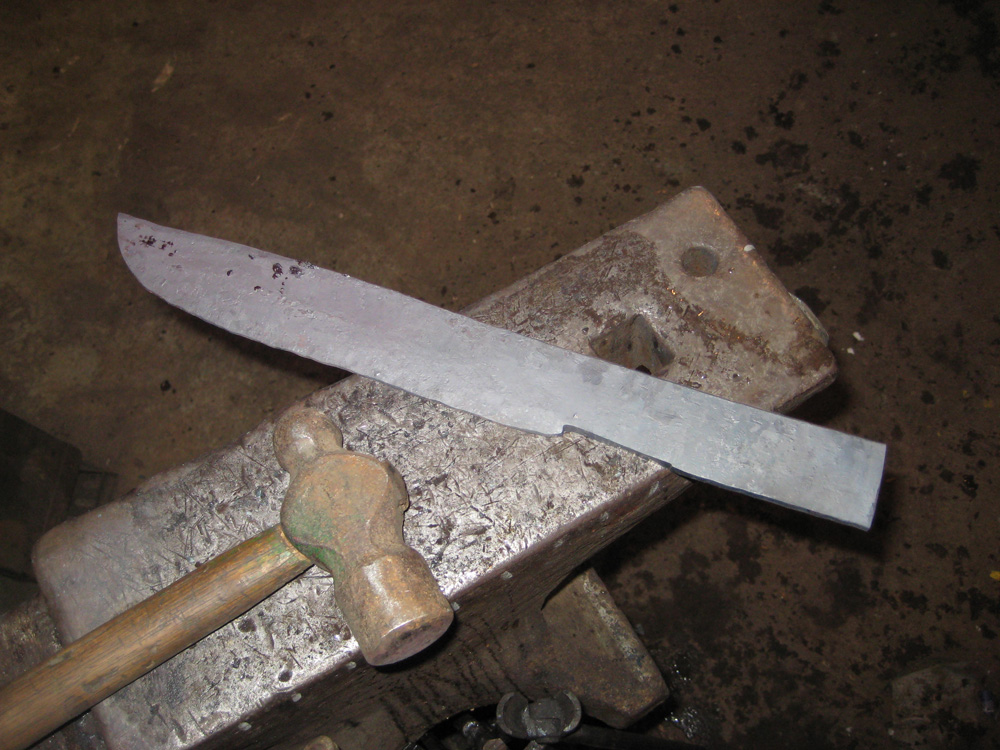
It is actually at a red heat there, but the flash makes it look black. I still have put the tang in it, but I had about enough for today. Here is one more picture of it without the flash so you can see the difference.
